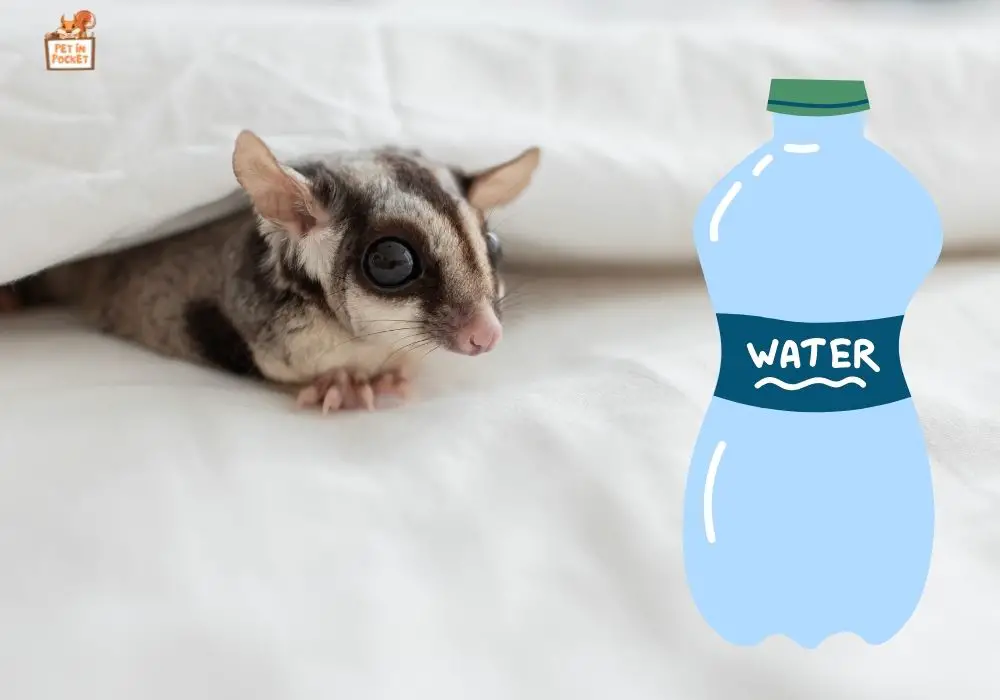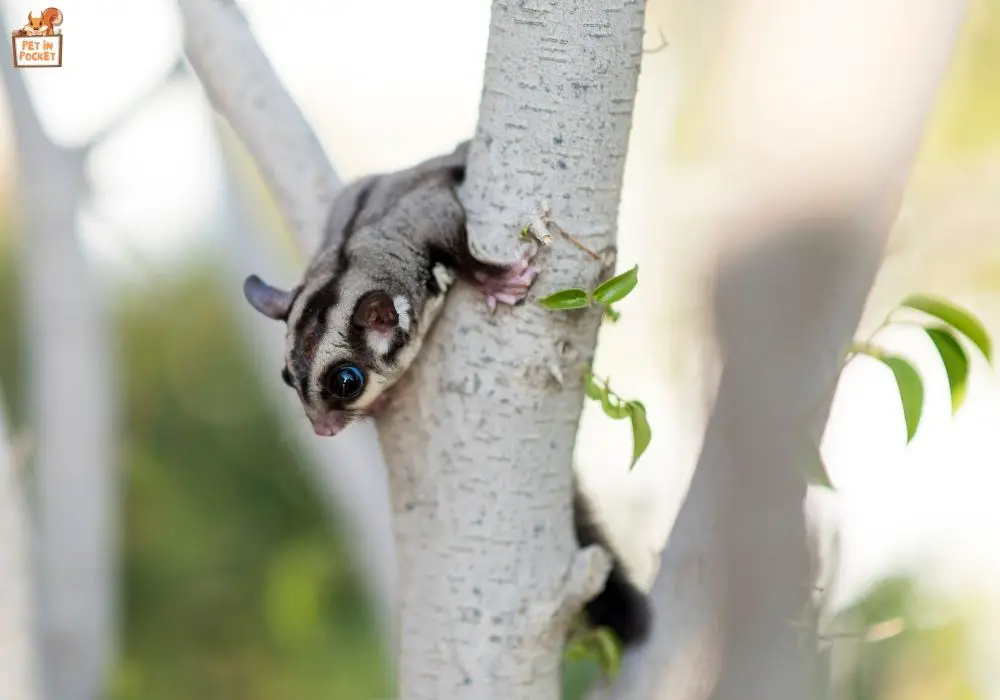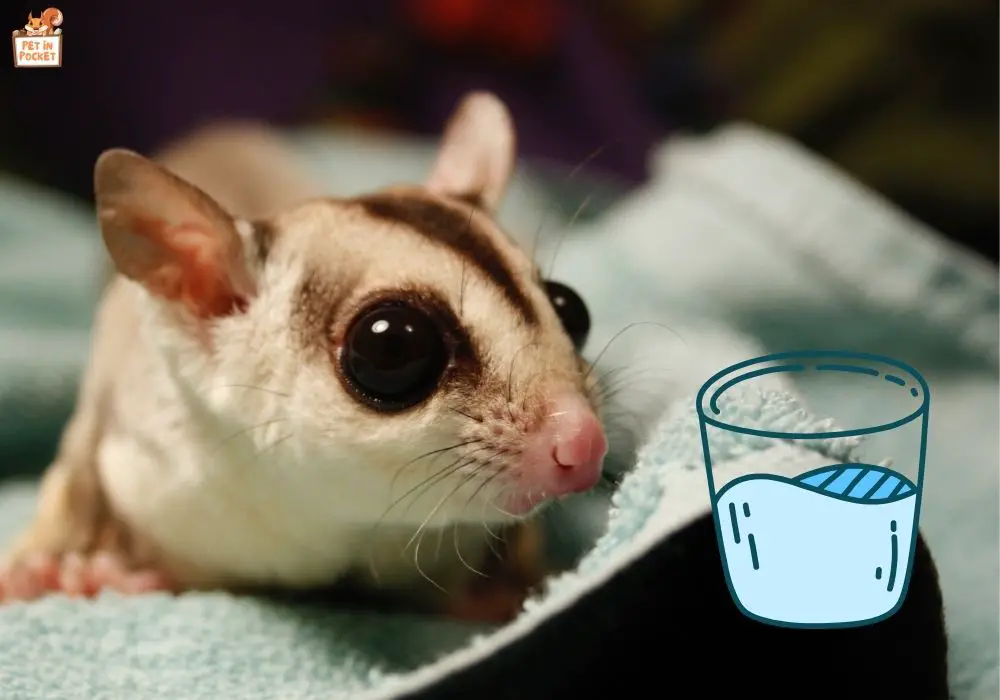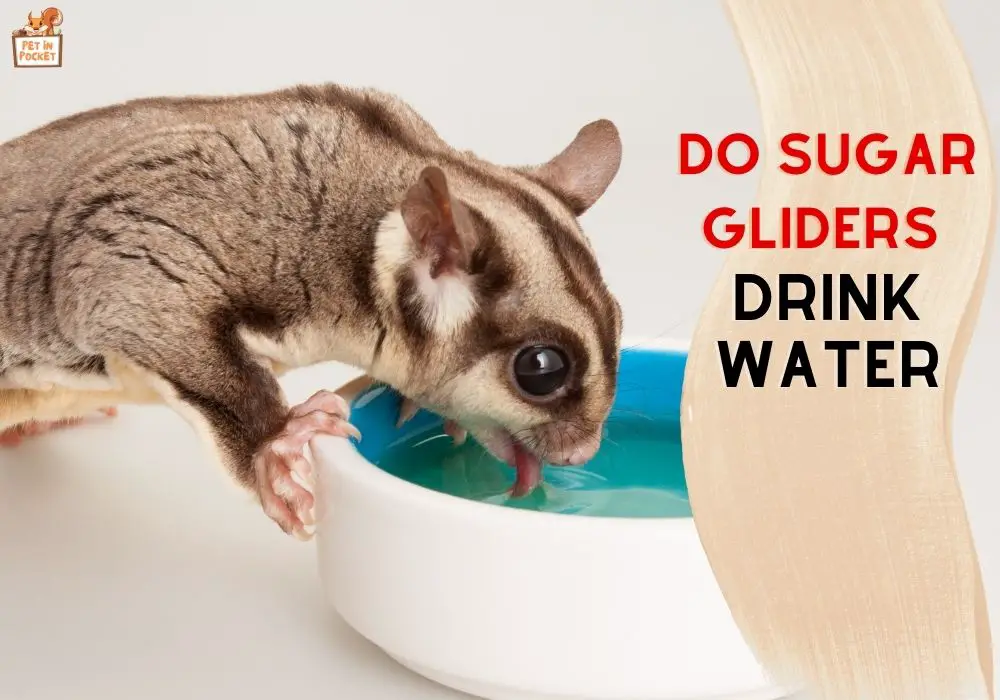Yes, they do
Sugar gliders are rare animals in Indonesia, Papua New Guinea, and Australia. They look like mice and are very popular as pets in the US. When taking care of them, there are many things to remember, and one of them is to make sure they stay hydrated. So the question is Do Sugar Gliders drink Water? In the wild, these cute little marsupials don’t drink water often because they stay hydrated by eating juicy fruits. But when they live in a box, they always need water. However, it is normal for babies not to want to drink from their bottles for the first few days. Baby sugar gliders should be fine as long as they eat fruits daily because that’s how they get most of their water. Find out If sugar gliders drink water, how to keep them from getting dehydrated, how long they can go without water, and more by reading on!
Table of Contents
Signs of Dehydration in Sugar Gliders

Dehydration in sugar gliders is a serious concern that requires attentive care and quick action. These adorable little creatures, known for their playful nature and unique gliding abilities, can become dehydrated just like us. Sugar glider owners need to recognize the signs of dehydration to ensure the well-being of their furry friends.
One of the primary signs of dehydration in sugar gliders is lethargy. If your usually active and curious glider shows less interest in playing or exploring, it might be a sign that something is wrong. Dehydration can sap their energy, making them appear unusually tired or sluggish.
Another telltale sign is a dry mouth. A healthy sugar glider’s mouth should be moist. If you notice that your glider’s mouth looks dry or their saliva seems thick and sticky, these could be indications of dehydration.
Sunken eyes are also a significant concern. In a well-hydrated glider, the eyes are bright and full. However, when dehydrated, the eyes may appear somewhat sunken and lack their usual spark.
Decreased urine output is another critical sign to watch for. If you notice fewer wet spots in their enclosure or if their urine is darker in colour than usual, this could mean they need more fluids.
As a responsible sugar glider owner, monitoring your pet’s water intake is vital. Make sure they have clean, fresh water at all times. Sometimes, dehydration can be a symptom of a larger health issue, so if you suspect your sugar glider is dehydrated, it’s crucial to seek veterinary care immediately.
Remember, your sugar glider relies on you for its health and happiness. By staying alert to these signs of dehydration and taking prompt action, you can help ensure your furry companion stays healthy and hydrated. Always consult with a veterinarian for the best care for your sugar glider. Let’s keep our adorable gliding friends healthy and active!
Water Requirements for Sugar Gliders

First, like any other animal, staying hydrated is key to sugar gliders’ health and happiness. Here’s something interesting about these cuties: a lot of their water intake comes from their diet. Sugar gliders love to munch on fruits and veggies, which naturally contain a lot of water. This is great because it’s a natural way for them to stay hydrated, just like in the wild. Imagine them in the lush rainforests, snacking on juicy fruits — that’s nature’s way of keeping them quenched!
However, when we have sugar gliders as pets, it’s important to remember that they still need a regular fresh water supply. Even though they get moisture from their Food, more might be needed, especially if their diet isn’t perfectly balanced or the environment is a bit drier. That’s where we come in!
Providing fresh, clean water is pretty simple but vital. You can use a small water bottle designed for small animals or a shallow dish they can easily access. The key here is ensuring the water is always clean and fresh. You wouldn’t want to drink stale water. Neither do they!
Regularly changing the water and cleaning their drinking area is just as important. This helps prevent any yucky bacteria or contaminants from affecting their health. It’s all about creating a happy, healthy home for these adorable gliders.
While sugar gliders get a good amount of moisture from their fruity diet, we need to ensure they always have fresh water available. It’s a simple step that keeps these delightful creatures healthy, hydrated, and ready for their next gliding adventure!
What kinds of water are safe to drink?
You are free to pick any water you want. The majority of people say to use tap water. If you drink tap water, it’s safe for your gliders, too.
Gliders can drink from your well if you check it often for bugs, germs, and other harmful things. If you read the label, there is a lot of tap water in bottled water. If all the minerals are taken out of pure water, it becomes acidic, which is not good even for humans.
This is nice for your gliders if you drink water from a bottle, but it’s unnecessary. Whichever you decide, you can also make it for your gliders.
How Sugar Gliders Drink Water?

Sugar gliders primarily drink by licking up dew or rainwater collected on leaves. This method is not only efficient but also quite enchanting to observe. Their long, slender tongues are perfectly adapted for this purpose, allowing them to lap up every precious drop of moisture from their leafy surroundings.
In captivity, however, their drinking habits are understandably a bit different. Pet sugar gliders are usually provided with water in a small dish or through a specially designed water bottle equipped with a sipper tube. These bottles are similar to those used for pet rodents, ensuring that the sugar gliders can access water whenever needed. The sipper tube method is particularly effective as it mimics their natural licking behaviour and helps keep the water clean.
Regardless of the method, sugar glider owners must regularly clean and refill the water container. This practice prevents the growth of harmful bacteria, ensuring that the water remains safe and fresh for these tiny creatures. Sugar gliders are quite sensitive to their environment, so maintaining clean and hygienic conditions is key to their well-being.
Like all living things, sugar gliders must stay hydrated to stay healthy. In the wild, they’ve adapted impressively to their environment, making the most of natural resources like dew and rain. In captivity, it’s our responsibility to replicate these conditions as closely as possible, providing them with clean, accessible water and a safe, loving home. It’s a small but significant way to care for these delightful little marsupials, ensuring they live healthy, happy lives.
How long do sugar gliders manage without water?
Finding someone to watch our little pets when we must leave for a few days is hard. Food and water are essential for your pet’s survival, so knowing how long it can go without drinking is important.
A sugar glider might make it through up to 12 hours with water. Ensure enough water is in your sugar glider’s cage if you leave it alone for a few days. Sugar gliders don’t need a lot of water, but they can’t go for long periods without it.
But if your sugar glider gets too dry, it could die. If your sugar glider is thirsty, you can give it water immediately or take it to the vet. It could also dehydrate if your sugar glider is sick or hurt and can’t reach the water bottle. It’s important to ensure the water ball works because sugar gliders can become dehydrated if it gets stuck in the water bottle and stops the water from running.
Conclusion and final thoughts
Due to their pickiness, sugar gliders sometimes get only some of the nutrients they need.
Sugar gliders should always have fresh water available, but don’t worry if they don’t drink much. They get most of their water from the Food they eat.
People who own sugar gliders feed them once a day at dusk and twice a day, in the morning and at night. This depends on what your sugar glider likes. You can give them a small amount of Food in the morning or more Food in the evening if they seem hungry again in the morning.
FAQ
How often do sugar gliders drink water?
The amount can change based on what they eat and where they live. Typically, they will drink water daily. It’s important always to have fresh water available for them.
How do I know if my sugar glider is drinking enough water?
Dehydration symptoms include lethargy, dry lips, and sunken eyes, so check their water bottle or dish.
Can sugar gliders drink anything other than water?
The primary drink for sugar gliders should always be water. Avoid giving them milk, soda, juice, or other beverages, as these can harm their health.
Are there any special considerations for water and sugar gliders?
In colder months, ensure that their water does not freeze. Also, be mindful of the water dish’s placement to prevent it from being contaminated with bedding or Food.






Leave a Reply